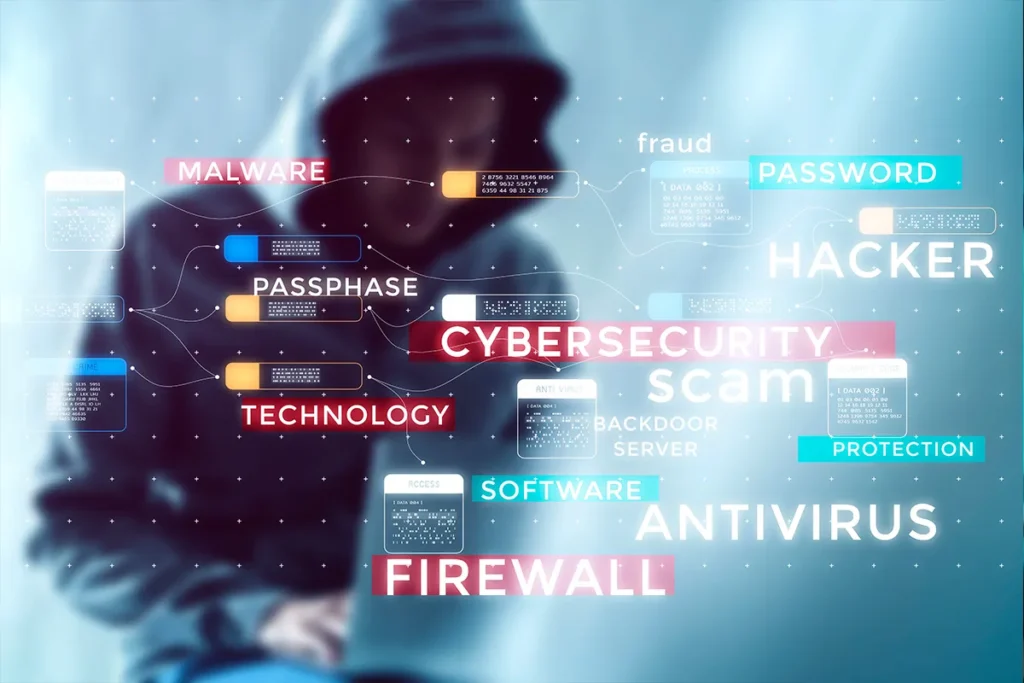As cryptocurrency continues to rise in popularity, the potential rewards can be significant, but so are the risks. With decentralized finance (DeFi), non-fungible tokens (NFTs), and crypto trading becoming more mainstream, the threat of hacks, scams, and cyber-attacks has never been higher. While the idea of owning digital assets is exciting, it’s essential to understand how to protect your wallet and investments from potential dangers.
In this blog post, we’ll dive deep into crypto security, explain the risks you face as an investor, and provide practical tips on safeguarding your digital assets. By the end of this guide, you’ll be better equipped to navigate the crypto world safely and securely.
Why Is Crypto Security So Important?
Cryptocurrencies operate in a decentralized environment, meaning there’s no central authority (like a bank) to reverse a fraudulent transaction or restore access if you lose your funds. Once a transaction is made on the blockchain, it’s irreversible. This decentralization is what gives crypto its power and freedom but also presents unique security challenges. Hackers and scammers know this and target crypto users who may not have adequate protection in place.
Here are a few reasons why crypto security is critical:
- Irreversible Transactions: If your crypto is stolen, there’s no customer service line or central authority to reverse the transaction or recover your funds.
- Private Keys Are Everything: In cryptocurrency, private keys are the equivalent of the PIN to your bank account. If someone gains access to your private keys, they control your funds.
- Increasing Hacks and Scams: As the value of crypto rises, so do the number of hacking attempts and scams targeting unsuspecting users.
To keep your investments secure, you need to take a proactive approach to crypto security. Below are the best practices you can follow to protect your wallet and investments.
Best Practices for Crypto Security
1. Use a Secure Wallet
The first step to securing your crypto is choosing the right wallet. There are several types of crypto wallets, each with different security levels:
- Hardware Wallets (Cold Storage): These are physical devices (like a USB drive) that store your private keys offline. Examples include Ledger Nano S/X and Trezor. Hardware wallets are the most secure because they keep your crypto offline and are immune to most types of online attacks. Our favorite is Tangem.
- Software Wallets (Hot Wallets): These are apps or browser extensions that store your private keys online. Popular software wallets include MetaMask, Exodus, and Trust Wallet. While convenient, software wallets are more vulnerable to phishing attacks, malware, and hacks since they are connected to the internet.
- Exchange Wallets: Many people store their crypto in wallets provided by exchanges like Coinbase, Binance, or Kraken. While convenient, this is not recommended for long-term storage since the exchange controls your private keys, not you. If the exchange is hacked, your funds could be at risk.
Best Practice: For long-term storage or large amounts of crypto, use a hardware wallet. For daily transactions or small amounts, a reputable software wallet can be sufficient.
2. Enable Two-Factor Authentication (2FA)
Two-Factor Authentication (2FA) adds an extra layer of security to your crypto accounts by requiring a second form of authentication in addition to your password. This is typically a code generated by an app like Google Authenticator or sent via SMS.
Why it’s important: Even if a hacker gets your password, they won’t be able to access your account without the 2FA code.
Best Practice: Always enable 2FA on any platform where you store or trade cryptocurrency. Avoid using SMS-based 2FA if possible, as it is less secure than app-based 2FA.
3. Be Cautious of Phishing Scams
Phishing is one of the most common ways hackers trick users into giving away their private keys or login credentials. Scammers often create fake websites, emails, or social media profiles that look like legitimate crypto services. Once you enter your details, the scammer can access your accounts and steal your funds.
Common phishing tactics:
- Fake emails from exchanges or wallets asking for your login information.
- Phony websites mimicking official crypto platforms.
- Direct messages on social media from scammers posing as support teams or influencers.
Best Practice: Always verify the URL before logging into a website and never share your private keys or login credentials with anyone. Bookmark the official sites of your exchanges and wallets, and never click on links from unsolicited emails or messages.
4. Backup Your Wallet and Private Keys
Losing access to your crypto wallet can be disastrous if you don’t have a backup. Most wallets provide a recovery phrase (a series of 12-24 words) when you set them up. This phrase can be used to restore your wallet in case your device is lost, damaged, or stolen.
Best Practice: Write down your recovery phrase on paper and store it in a secure, offline location. Never store your recovery phrase on your phone, computer, or any online service where it could be hacked.
5. Keep Your Software Updated
Hackers often exploit outdated software to gain access to wallets and exchanges. Crypto wallets, exchanges, and apps frequently release updates that include important security patches.
Best Practice: Regularly update your wallet software, browser extensions, and apps to ensure you have the latest security protections.
6. Avoid Public Wi-Fi for Crypto Transactions
Public Wi-Fi networks are often unsecured and can be easily exploited by hackers to intercept sensitive information. If you access your wallet or make crypto transactions over public Wi-Fi, you’re putting your private keys and funds at risk.
Best Practice: Avoid using public Wi-Fi for accessing your crypto accounts or making transactions. If you must use a public network, consider using a Firewall + Virtual Private Network (VPN) to encrypt your internet connection.
7. Use Strong, Unique Passwords
Using weak or reused passwords is one of the easiest ways for hackers to gain access to your accounts. A strong password should include a mix of upper and lower case letters, numbers, and special characters.
Best Practice: Use a password manager to generate and store strong, unique passwords for all your crypto accounts. This ensures that even if one password is compromised, the rest of your accounts remain secure.
8. Diversify Your Investments and Storage
Never put all your crypto in one wallet or exchange. By spreading your funds across multiple wallets or platforms, you reduce the risk of losing everything if one is compromised.
Best Practice: Consider using a mix of hot and cold wallets, and spread your assets across different exchanges or storage methods.
Staying Vigilant in a Decentralized World
Cryptocurrency offers exciting opportunities, but with great freedom comes great responsibility. Unlike traditional banking systems where you can rely on a bank to protect your funds, in the world of crypto, security is largely up to you. By following these best practices, you can dramatically reduce your risk of falling victim to a hack or scam.

Conclusion:
As enthusiasts and long-time participants in the crypto space, Lee and I, Eric, understand the excitement that comes with exploring new technology and investments. We’ve both experienced the highs of watching our crypto portfolios grow and the lows of navigating the constant security challenges that come with it. Crypto security isn’t something to take lightly, and it’s a topic we care deeply about.
We’ve learned through experience that protecting your investments requires a proactive approach. We’ve had to stay one step ahead of potential threats and consistently reinforce our security measures. And while it may seem daunting at first, taking these precautions is well worth the peace of mind it brings.
We want to share with you that security isn’t just about safeguarding what you have today—it’s about ensuring that you can continue to participate in this groundbreaking movement for years to come without fear of losing your hard-earned investments. Whether you’re just starting or have been in the crypto world for a while, remember: you’re in control of your security, and the steps you take now can save you a lot of heartache later.
Our advice? Start implementing these security practices today, no matter the size of your portfolio. It’s a small investment of time and effort that can make a world of difference. Stay curious, stay cautious, and above all—stay secure.
Ty,
Team #CodeIsLaw















